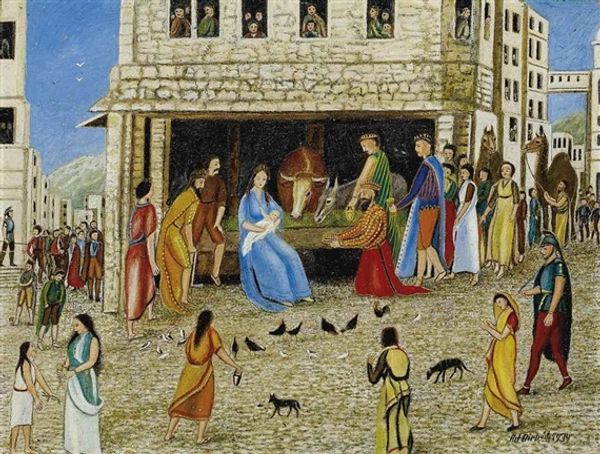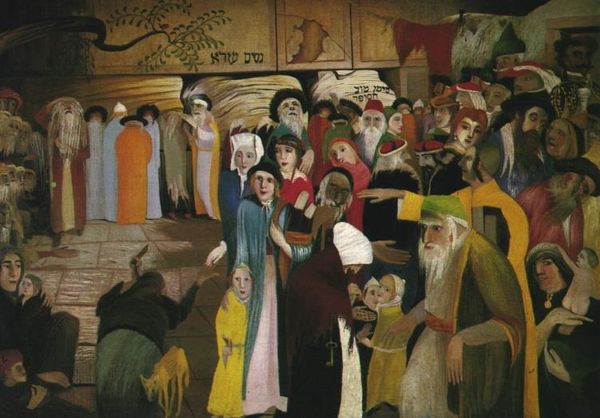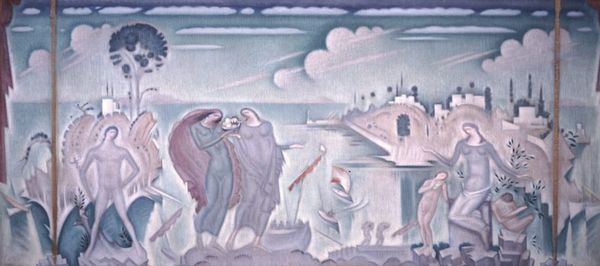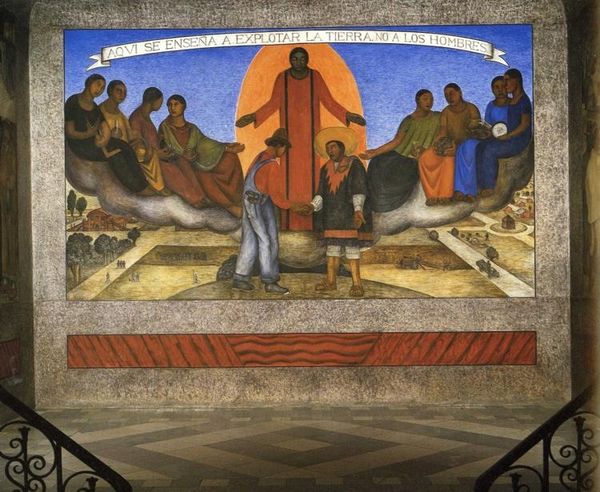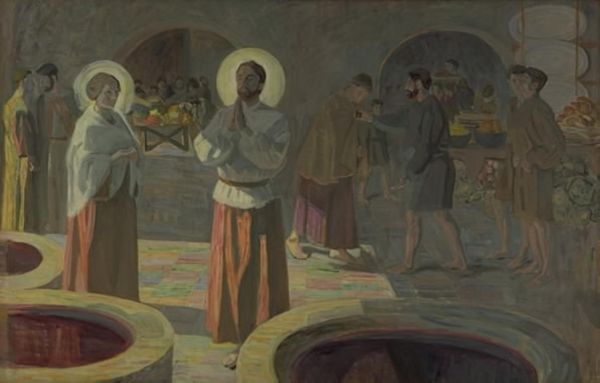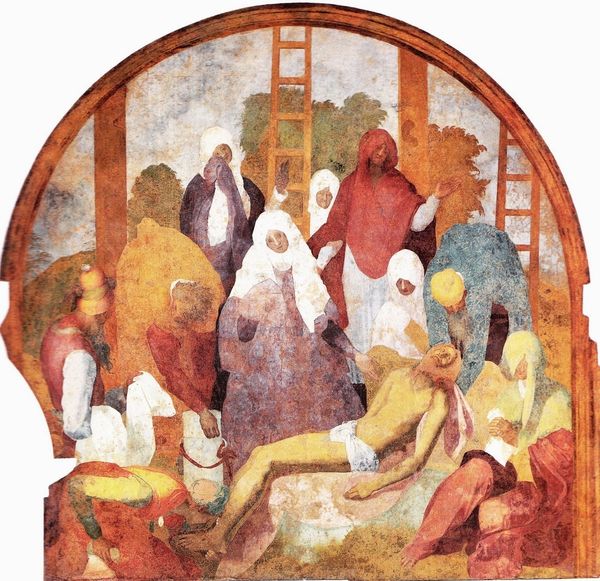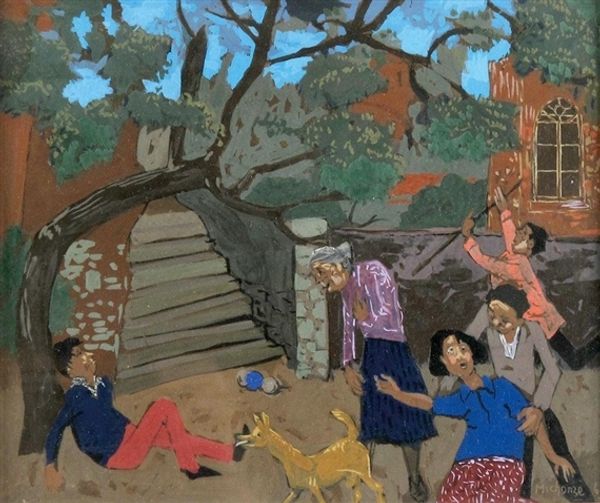
Copyright: Public domain
Editor: This is Tivadar Kosztka Csontvary's "Mary's Well at Nazareth," painted in 1908 using oil on canvas. It's really striking, and the way he's depicted this gathering around the well feels almost dreamlike. The figures seem so deliberately arranged. What draws your eye when you look at this painting? Curator: My attention is immediately directed to the way Csontvary highlights the means of material and social production, even within what seems like a straightforward genre scene. Consider the jugs the women carry – are they just props? No, they represent labor, utility, and the daily realities of accessing essential resources. The well itself isn't just a backdrop; it’s a site of collective effort and social interaction, constructed with specific materials through labor. Editor: So you see the materials and how they're used as key to understanding the painting's message? Curator: Absolutely. And it’s crucial to investigate not just the scene depicted, but how the act of painting itself transforms that scene. What kind of oil paint was he using? How available were these materials? Examining his choices tells us about his place in the broader art market. Did he grind his pigments? Where did he buy the canvas? All these material choices influence the final product, changing it, forming its aesthetic appeal. Editor: That’s a perspective I hadn't considered before. It's not just what's depicted, but how it’s depicted, and what resources went into creating the depiction. Does the “plein-air” style speak to that at all? Curator: Good question. Painting en plein air connects him to a tradition celebrating direct engagement with the world, and to the conditions within which materials degrade through exposure to the elements – what are the conservation challenges with a plein-air piece created using such pigments, exposed as it would be to differing conditions of humidity? Moreover, the accessibility of outdoor painting – its material democratization – is an interesting challenge to ideas about “high art.” We are led back to the scene and how different its experience would be between social groups, each bringing different degrees of ability to secure safe and secure work and shelter. Editor: That is true. Considering those factors really shifts my understanding. Thanks, that’s been eye-opening! Curator: It's fascinating how a materialist approach reframes our understanding, right? It highlights the often-overlooked layers of social and material reality embedded in the art itself.
Comments
No comments
Be the first to comment and join the conversation on the ultimate creative platform.
